57 Scary Psychological Horror Movies
Gore, jump scares, and graphic violence take a back seat; the dark depths of the human mind come to the forefront.

Psychological horror movies focus on emotional and mental states to scare the audience rather than a concrete villain like a monster or masked killer. This doesn’t mean that monsters or killers are never in a psychological horror movie, just that they are not the primary focus of the film. The real focal point is at least one of the character’s state of mind.

Like the more well-known subgenre of psychological thriller, psychological horror movies are almost always mysteries and frequently utilize twist-endings and/or unreliable narrators. The difference between a thriller and a horror movie comes down to how explicitly scary it is — is blood and gore shown on screen? Or does the film focus more on suspense and implied danger? Common themes for psychological horror movie are sanity, mental illness, mind control, paranoia, conspiracy, gaslighting, grief and trauma.
Suspense is key storytelling technique used in psychological horror movies. They are often uncomfortable to watch in an abstract, or cerebral, way and can venture into the surreal. “Unnerving” is another perfect word to describe the genre. Gore, jump scares, and graphic violence take a back seat; the dark depths of the human mind come to the forefront. These movies play off anxious energy.
Table of Contents
This list catalogs the large cannon of psychological horror movies from the 1920s to the present:
Old Psychological Horror Movies
The Cabinet of Dr. Caligari (1920)

In one of the earliest examples of psychological horror, The Cabinet of Dr. Caligari uses the twisted imagery of German Expressionism to depict the the fractured minds of its characters. The film is about a mysterious man, the titular Dr. Caligari, who shows off his skills as a hypnotist with a somnambulist named Cesare. What appears to be something like a sideshow attraction is much more sinister, as Cesare is controlled by Caligari to kill. The Cabinet of Dr. Caligari is one of the most influential horror movies of all time, and its unnerving visuals and repeated twists make it an effective psychological horror movie more than a century after its release.
Psycho (1960)

Psycho is credited by some as one of the earliest examples of a slasher movie, but while it certainly had influences on the slasher subgenre, it’s really one of the greatest psychological horror movies of all time. Anthony Perkins stars as Norman Bates, the manager of a motel whose pleasant demeanor hides a shockingly demented mind. Perkins’ ability to believably reveal layer after layer of Norman’s disturbed mind is one of the great accomplishments in horror cinema. Psycho should be required viewing for anyone getting into psychological horror films.
The Haunting (1963)

Based on Shirley Jackson’s novel The Haunting of Hill House, The Haunting is a haunted house movie that takes a strong psychological approach to horror. In the film, Dr. Markway investigates a supposedly haunted house with Luke, the heir to the house, Theo, a psychic, and Eleanor, a timid woman sensitive to the paranormal. It seems as if Eleanor may be the focus of the strange occurrences in the house, and viewers experience that haunting largely from her perspective. The Haunting is a remarkable film in the way it creates a tense and frightening atmosphere without actually showing the audience almost anything in the way of supernatural activity. Most of the scares come from the way the film is shot and through Eleanor’s increasingly fearful state of mind.
Repulsion (1965)
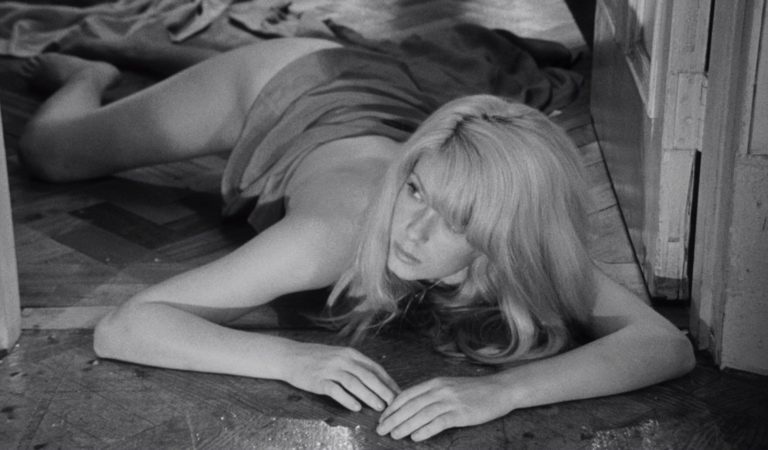
The beautiful blonde Catherine Deneuve stars as a mentally ill woman who is repulsed by men and the very idea of sex. As she sits alone in an apartment during a vacation, her mind unspools into madness and hallucinations. The New York Times wrote: “Mr. Polanski uses slow camera movements, a soundtrack carefully composed of distracting, repetitive noises (clocks ticking, bells ringing, hearts thumping) and, once Carol barricades herself in the cramped, dark apartment, explicitly expressionistic effects (cracks suddenly ripping through walls, rough hands reaching out of the darkness to grope her) to depict a plausible schizophrenic episode.”
Rosemary’s Baby (1968)

When a young couple, Rosemary (Mia Farrow) and Guy (John Cassavetes), move to an apartment in New York City, they befriend an older couple in the building (Ruth Gordon and Sidney Blackmer). Soon after, Guy’s career as an actor takes off and Rosemary becomes pregnant. As the delivery date draws closer, Rosemary’s increasing paranoia may be due to mental illness, or it might be due to something sinister going on within the apartment building. Rosemary’s Baby is a masterwork of psychological horror that became greatly influential within this subgenre.
Let’s Scare Jessica to Death (1971)

Fresh from a psychiatric institution, Jessica (Zohra Lampert) relocates to the countryside to fix up a dilapidated mansion with her husband. Upon arrival, they meet Emily (Mariclare Costello) who has been squatting in their home. Still full of hippie idealism, the couple invites Emily to stay on. Jessica begins to hear voices in the home but is worried that if she tells her husband, he will institutionalize her again.
The Killing Kind (1973)
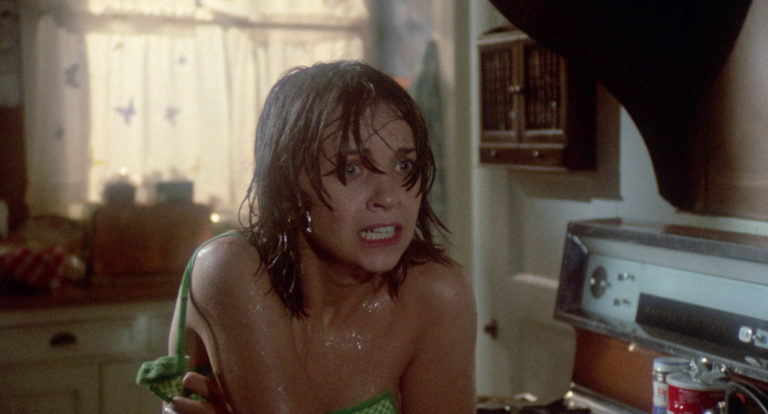
A young man, Terry (John Savage), was among a group of men who gang-raped a young woman at a beach. Although he was physically forced into joining, he was nevertheless sentenced to two years in prison. After he gets out, Terry reunites with his mother, whom he is uniquely close with, and she encourages him to seek revenge by murdering the rape victim who “framed” him and the female lawyer who failed to keep him out of prison.
Symptoms (1974)

A British psychological horror movie about Helen (Angela Pleasence), a young woman recovering from an unspecified illness at her dilapidated country mansion. She invites her friend Anne (Lorna Heilbron) to spend time with her. Upon arrival, Anne is concerned with both Helen’s mental health, and the possibility that someone else could be living in the house. As Helen’s state of mind deteriorates, things get even creepier.
The Sender (1982)

After a failed suicide attempt, a man is rescued and admitted into a psychiatric hospital. He has no memory of who he is or where he came from. When a therapist begins treating him, she notices that she is suddenly afflicted with disturbing, nightmarish dreams she comes to suspect are her patient is sending them to her telepathically. Problem is, these dreams he sends to them wind up with tragic results in real life.
Jacob’s Ladder (1990)

Adrian Lyne directed this psychological horror movie about a troubled Vietnam veteran, Jacob (Tim Robbins). While in Vietnam, Jacob’s unit fell prey to a surprise attack that resulted in the deaths of many of his fellow soldiers, while the survivors (including Jacob) were left with psychological injuries like catatonia, hallucinations and flashbacks. Home in Brooklyn, Jacob struggles to go on with his life due to his mental health issues, and becomes suspicious when he realizes aspects of his time in Vietnam don’t add up.
Roger Ebert says, “The movie lives right on the raw edge of insanity, and carries us along with it….What ‘Jacob’s Ladder’ really wants to do is to evoke the feeling of a psychological state in the audience. We are intended to feel what the hero feels.”
The Silence of the Lambs (1991)
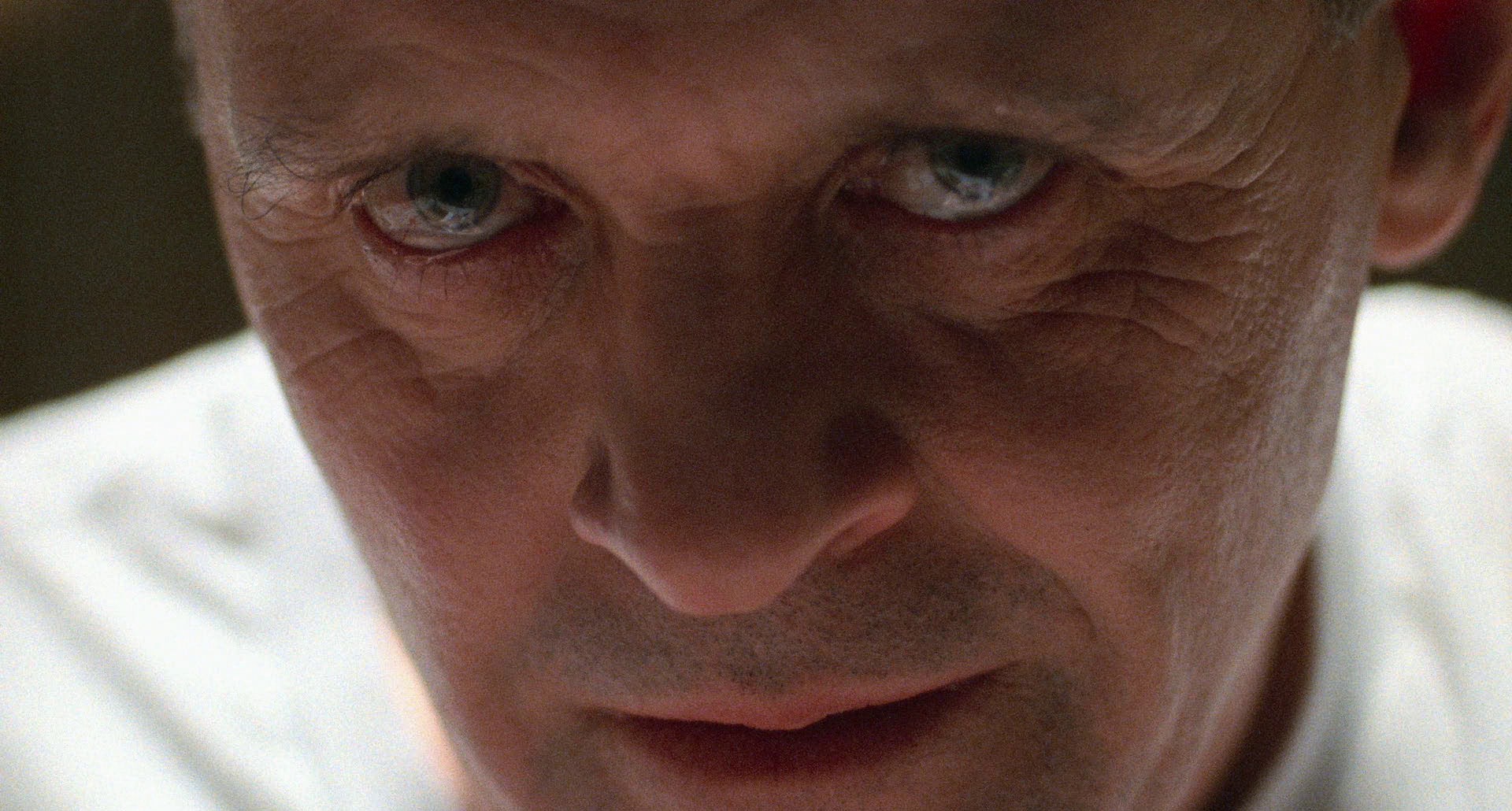
The Silence of the Lambs is a suspenseful psychological horror film that was a massive commercial success and swept the top five Academy Awards: Best Picture, Best Director, Best Actor, Best Actress, and Best Adapted Screenplay. The film is about the search for the identity of a serial killed nicknamed Buffalo Bill. As little progress has been made, an FBI trainee, Clarice Starling (Jodie Foster), is tasked with consulting the incarcerated genius serial killer Dr. Hannibal Lecter (Anthony Hopkins) with the hopes that he will help the FBI identify the killer.
Ring (1998)

Also known as Ringu, this Japanese horror movie is familiar to American horror fans as the original version of The Ring (2002). It opens with two teen girls discussing a cursed video tape that results in the death of anyone who watches it within 7 days. After one of the girls is killed, her aunt Reiko (Nanako Matsushima) investigates the urban legend surrounding the video tape.
The Sixth Sense (1999)

The Sixth Sense by writer/director M. Night Shyamalan is a masterpiece of psychological horror. Child psychologist Malcolm Crowe (Bruce Willis) meets a new patient, Cole Sear (Haley Joel Osment) who claims to see frequent apparitions of dead people. Obviously skeptical of Cole’s claim, Malcolm slowly begins to believe the young boy after seeing evidence of his ability. Cole’s mother (Toni Collette) also comes around to believing Cole after he tells her information about his grandmother that would be impossible for him to know.
Gemini (1999)
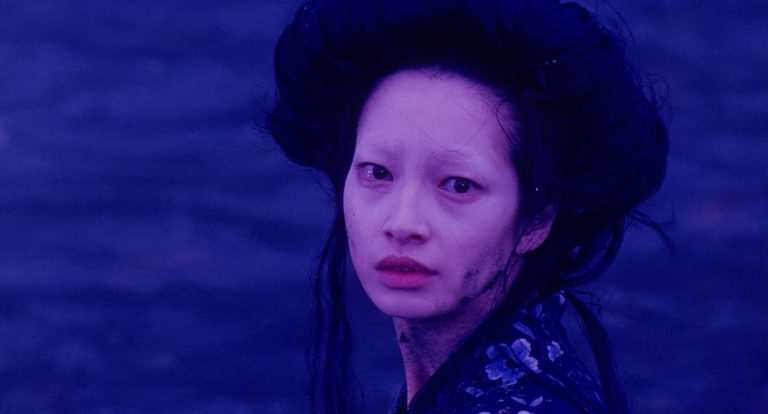
A Japanese horror movie set in 1910 Tokyo. A successful doctor (Masahiro Motoki) has a wife, Rin (Ryo), who suffers from amnesia and cannot remember her past. When the doctor’s parents die in quick succession, he comes to believe he is the target of a serial killer. Mondo-Digital writes: “Though not overtly supernatural, Gemini is a skin-crawling horror film packed with enough colorful, nightmarish imagery to send most Western critics into fits.”
New Psychological Horror Movies
American Psycho (2000)

Feminist filmmaker Mary Harron co-wrote the screenplay and directed this psychological horror movie satirizing toxic masculinity. Based on the controversial Bret Easton Ellis novel of the same name, American Psycho also provides funny (and violent) commentary on the 80s, capitalism, drugs, fashion and yuppie life. Christian Bale stars as Patrick Bateman a New Yorker who splits his time between working on Wall Street and serial killing, his grip on reality deteriorating as the film goes on.
Mulholland Drive (2001)

David Lynch directed this dreamy, surreal masterpiece about a woman, “Rita” (Laura Harring) who suffers amnesia after surviving a car crash in LA’s notoriously winding Mulholland Drive. She meets an aspiring actress, Betty (Naomi Watts), and the two try to solve the mystery of Rita’s identity. SF Gate calls it “A wacked-out parable about contemporary Hollywood and the psychological toll it extracts from the young and innocent….It’s weird, it’s impenetrable, but there’s a mesmerizing quality to its languid pace, its sense of foreboding and its lost-in-time atmosphere — and no lack of wiggy Lynchian humor.”
Session 9 (2001)

An underrated horror movie about a man named Gordon (Peter Mullan) who is hired to remove asbestos from an abandoned insane asylum. Gordon’s crew member Mike (Stephen Gevedon) discovers a box of session tapes from a patient with dissociative identity disorder and he listens to them to pass the time on the job. Strange things start happening to the crew and their numbers dwindle as Mike gets closer to finishing the tapes.
A Tale of Two Sisters (2003)

A South Korean psychological horror movie about a teen girl, Su-mi (Im Soo-jung), who returns from a psychiatric institution to live with her father, stepmother and sister, Su-yeon (Moon Geun-young). Su-mi uncovers secrets about her deceased mother and the stepmother she has never liked, and sees her mother’s ghost. When the girls’ aunt and uncle visit, the aunt has a seizure caused by seeing a ghost. Su-mi struggles to put the pieces together and figure out what or whom is haunting her family home.
An American remake, titled The Uninvited (2009), was released with a fairly negative reception.
Gothika (2003)

Halle Berry stars as Dr. Miranda Grey, a psychiatrist who drives home from work late one night and swerves when she sees a young woman on the road. She wakes up as a patient in the very mental ward where she used to work, and learns she is being charged with murdering her own husband. Miranda remembers the woman in the road carving “Not Alone” into her arm, though the hospital staff are convinced it was an act of self-harm. With no one to believe her, Miranda has to work out whether she is indeed unwell or whether someone is setting her up to take the fall for murder.
Identity (2003)

This psychological horror movie can also be considered a slasher and is based on the Agatha Christie whodunit novel And Then There Were None. A frame story shows a sadistic mass murderer named Malcolm Rivers (Pruitt Taylor Vince) awaiting execution as lawyers argue about whether he is aware of his crimes due to his psychiatric illness. Meanwhile, ten strangers arrive at a Nevada motel where they intend to wait out a heavy rainstorm that has flooded the road. One by one, the motel guests begin getting offed as the others search for the killer among them.
Black Swan (2010)

Directed by Darren Aronofsky, Black Swan follows a young ballerina named Nina (Natalie Portman) who lands her first lead role in Tchaikovsky’s Swan Lake as both the innocent White Swan and the uninhibited Black Swan. While she excels at perfecting her performance as the White Swan, her understudy Lily (Mila Kunis) outperforms her when it comes to the more sensual Black Swan. Failing to live up to the expectations of her toxic failed ballerina mother (Barbara Hershey) and demanding artistic director (Vincent Cassel), Nina’s mental health begins to unravel.
Parallels have been drawn between Black Swan and the Japanese psychological horror anime movie Perfect Blue (1997), though Aronofsky denies he was inspired by the film.
Kill List (2011)

A British psychological horror movie about a former soldier, Jay (Neil Maskell), who becomes a contract killer. Still traumatized by a past mission in Kiev, Jay accepts a new job to kill three people as he and his wife are broke. The job involves murdering a priest, a librarian and a member of Parliament.
Silent House (2011)

Elizabeth Olsen stars in this psychological horror movie as a young woman, Sarah, returning to her family’s lake house to help her father (Adam Trese) and uncle (Eric Sheffer Stevens) fix it up in order to sell. Things inside the home are dark and Sarah is convinced they are not alone. The film unravels in real time as the family confronts a possible intruder and secrets from their past. This is a remake of the 2010 Uruguayan movie La Casa Muda.
Creep (2014)

A found footage psychological horror movie that stars Patrick Brice and is also his directorial debut. Brice portrays Aaron, a videographer who agrees to record a video diary for Josef (Mark Duplass), a cancer survivor who wants to document a day in his life for his unborn child. Things get real weird between Aaron and Josef throughout the day, and it turns out Josef might not have been entirely truthful about his intentions. Creep is darkly comedic, but it also leans heavily into the psychological horror aspect of the scenario as Josef begins stalking and harassing Aaron.
A sequel, Creep 2 (2017) follows Josef and a new videographer, Sara (Desiree Akhavan), spending a day together to make a documentary about his life.
Goodnight Mommy (2014)

An Austrian psychological horror movie about twin boys, Elias and Lukas (Elias and Lukas Schwarz), who live with their mother at an isolated home in the country. When their mother returns from plastic surgery with her face bandaged, the boys wonder whether she is an imposter. Their suspicions seem to be confirmed by her cruel demeanor and by photographs the boys uncover which show her looking much different.
An American remake starring Naomi Watts was released on Prime Video in 2022.
The Killing of a Sacred Deer (2017)

An absurdist psychological horror movie about a successful surgeon (Colin Farrell) who befriends a troubled young boy named Martin (Barry Keoghan). As Martin is invited into the surgeons home, a mysterious illness that causes paralysis afflicts the family members one by one.
Gerald’s Game (2017)

Jessie (Carla Gugino) and and her husband Gerald (Bruce Greenwood) head to a secluded cabin in the woods for a romantic weekend getaway. Jessie reluctantly agrees to be handcuffed to the bed in order to please her narcissistic husband. Unfortunately, Gerald dies from a heart attack, leaving Jessie unable to move from the bed and trapped alone without hope of rescue. Jessie’s psychological state deteriorates and she hallucinates (or does she?) hungry dogs, her husband’s sadistic spirit and the frightening “Man in the Moonlight” who come to torment her.
Get Out (2017)

Daniel Kaluuya stars in Jordan Peele’s directorial debut as Chris, a black man who is apprehensive about a weekend trip to meet his white girlfriend Rose’s (Allison Williams) parents (Bradley Whitford and Catherine Keener). Rose’s mother is a hypnotherapist who coerces Chris into a session with him. Chris also notices the family’s black maid (Betty Gabriel) and black groundskeeper (Marcus Henderson) act strangely. The family’s secret is unravelled in Get Out‘s famous twist-ending and the film has received widespread praise as vehicle for discussing neoliberalism and race.
Hereditary (2018)

Ari Aster’s feature directorial debut is this psychological horror movie that is widely considered to be one of the scariest films ever made. When a sudden death traumatizes the Graham family, they fracture and endure psychological torment individually. Meanwhile, the family matriarch discovers her recently deceased mother had a secret life as the leader of a local coven. Both plots converge in a horrifying climax of both supernatural and psychological horror.
Ma (2019)
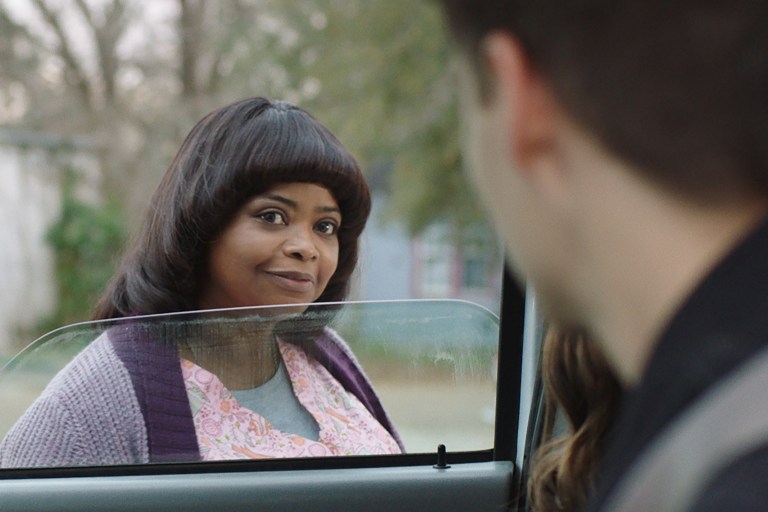
A group of high school students fail to convince a woman, Sue Ann (Octavia Spencer), they meet outside of a liquor store to purchase alcohol for them. She declines and secretly reports them, but as one of the teen’s fathers is buddies with the police officer, nothing happens. Later, Sue Ann encourages the kids to use her basement for partying, even providing alcohol for them. Slowly the students begin to become suspicious of Sue Ann, who has asked them to call her “Ma”.
Midsommar (2019)

With elements of psychological horror, Midsommar can also be considered a folk horror movie and director Ari Aster has said he sees it as a dark fairy tale. It follows a troubled young woman named Dani (Florence Pugh) who joins her gaslighting boyfriend Christian (Jack Reynor) and his anthropology grad student friends on a trip to Sweden to experience a commune’s midsummer festival which occurs only once every 90 years. The commune’s customs alternate between wholesome and barbaric and leave Dani wondering if they should flee while they have the chance.
The Lighthouse (2019)

Robert Eggers (writer/director of The Witch) directed and co-wrote The Lighthouse, a tale of madness set in a lighthouse on an isolated island. Willem Dafoe and Robert Pattinson star as two lighthouse keepers, respectively a veteran and a rookie. When a storm turns their month-long job into an indefinitely long stay with dwindling rations, the two men rapidly begin to lose their grip on reality. The Lighthouse can be darkly comedic at times while being bizarrely disturbing in the very same moment.
The Lodge (2019)

A man takes his children Aiden (Jaeden Martell) and Mia (Lia McHugh) and his mistress-turned-fiance Grace (Riley Keough) to the family’s remote lodge for Christmas. However, he soon departs to go back to work in the city for a few more days before the holiday. Grace has recently escaped a suicide cult which was lead by her father and still appears emotionally disturbed. The children play cruel pranks on her before the whole family notices that something is not right at the lodge.
Saint Maud (2019)

A British horror movie directed by Rose Glass about a young hospice nurse, Maud (Morfydd Clark). Maud is a fanatical Christian who becomes obsessed with saving the soul of her dying patient (Jennifer Ehle), who is an atheist. It becomes clear that Maud is unwell and has recently endured trauma. When she is fired by her patient, her grasp on sanity slips away.
Last Night in Soho (2021)

A British horror movie directed by Edgar Wright about a teenager, Ellie (Thomasin McKenzie) who follows her dreams and relocates to London to attend fashion school. Obsessed with the sixties, Ellie begins dreaming about a woman named Sandie (Anya Taylor Joy) who lived in the 60s in the Soho neighborhood of London’s West End. When she “sees” Sandie being murdered Ellie begins to wonder if she was a real woman whose killer is still at large.
More Psychological Horror Films

- The Black Cat (1934) American honeymooners in Hungary take refuge in a house after a car accident.
- Cat People (1942) is another early one from Jacques Tourneur and produced for RKO by Val Lewton.
- The Leopard Man (1943) a leopard that was thought to be tame escapes from its captors and terrorizes people in New Mexico.
- The Spiral Staircase (1946) a mute woman is stalked by a killer who targets women with disabilities.
- Dementia (1955) contains no dialogue and showcases a woman’s descent into madness during one night in LA’s notorious Skid Row.
- The Innocents (1961) this UK ghost film merges the paranormal with emotional distress and loss.
- Morgiana (1972) a sibling horror film with strong undercurrents of mind-driven horror.
- The Shining (1980) is a classic film about the mental anguish of isolation and writer’s block.
- Kisapmata (1981) in this horror movie from the Philippines, a father loses his mind when his daughter gets married.
- Misery (1990) there is nothing supernatural about this film, just the real horrors of the human mind.
- Whispering Corridors (1998) is a South Korean supernatural horror film that involves a sadistic headmistress at a school for girls and her attempts to manipulate a student.
- Smiley (2012) a mentally ill girl wonders if she’s conjured a demon from the Internet named Smiley.
- Hotel (2004) is a German horror film about a young woman that comes to work at an isolated Alpine hotel. Religious undertones, eerie imagery, and isolation make this a unique foreign psychological horror flick.
- Synecdoche, New York (2008) a director attempts to build a life-sized replica of New York City inside a warehouse.
- We Need to Talk About Kevin (2011) is one of the most disturbing yet slow-moving films about a school shooing ever made.
- Enemy (2013) a man becomes obsessed with finding his doppelgänger after spotting his body double in a movie.
- Antisocial Behavior (2014) a tortured artist begins losing his mind after playing a game of “Truth or Dare.”
- The Visit (2015) is one of the top found footage horror films.
- It Comes At Night (2017) is an A24 slow burn and inner horror movie.
- Delerium (2018) a psychological horror movie about a man recently released from a psychiatric institution (Topher Grace) who inherits a haunted house.
- The Perfection (2018) a former child prodigy musician (Allison Williams) meets a new star pupil (Logan Browning) from her prestigious alma matter in Shanghai and the two decide to travel together.
- Wounds (2019) written and directed by Babak Anvari, this is a Hulu Original horror movie with an all-star cast (Armie Hammer, Dakota Johnson, and Zazie Beetz). The plot rotates around a lost phone and has an interesting technological element.
Further reading:
